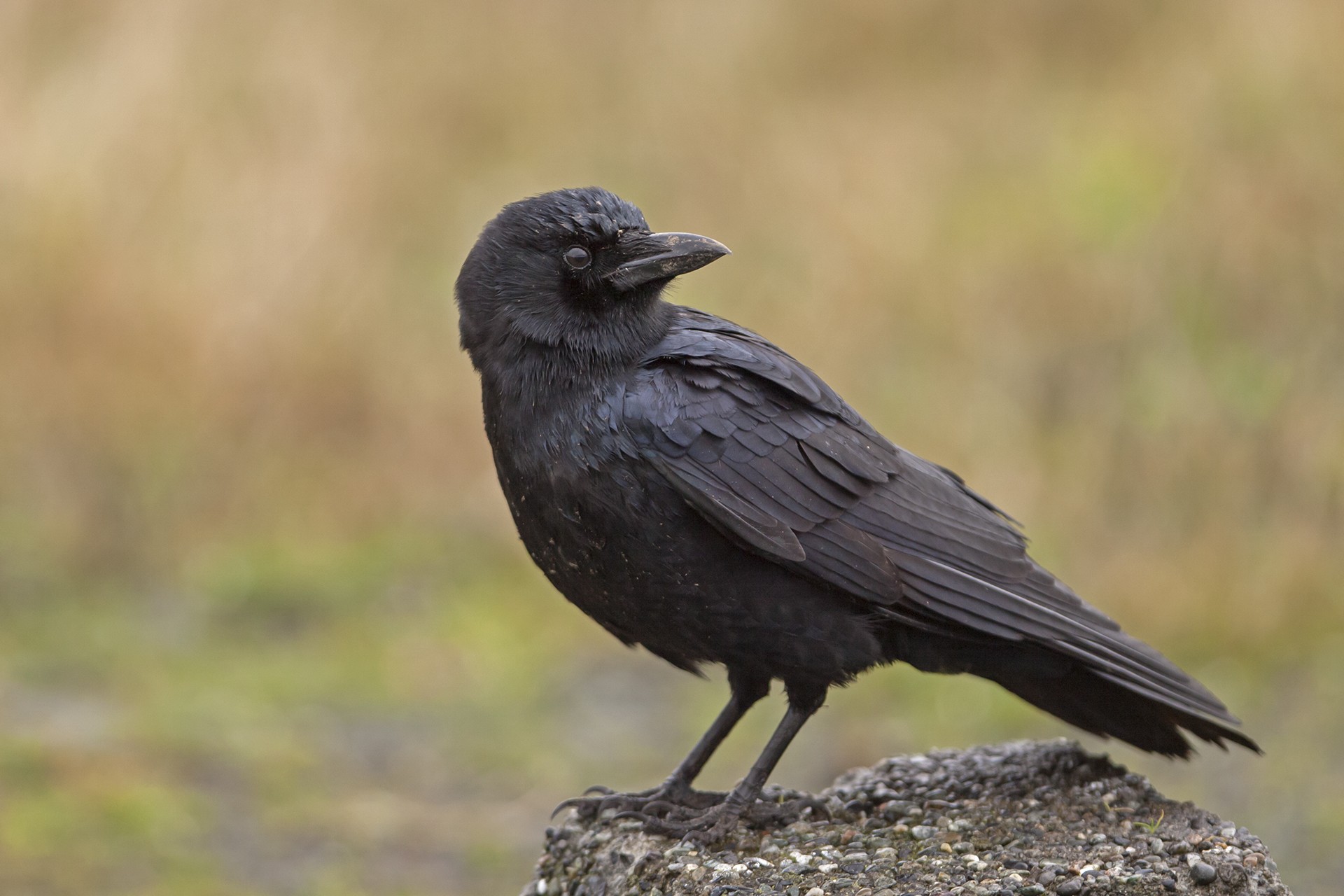Graduate research
Cryptic hybridization in American crows
Most species and hybrid zones have historically been described using phenotypic characters, but speciation and hybridization can also occur with negligible morphological differentiation. The Northwestern Crow (Corvus caurinus) and American Crow (Corvus brachyrhynchos) are sister taxonomic species with a continuous distribution that lack reliable traditional characters for identification. Using genomic SNPs (nuDNA) and mtDNA, we found that American and Northwestern crows have distinct evolutionary histories dating to the late Pleistocene, when glacial advances may have isolated crow populations in separate refugia. Today, they hybridize extensively, with geographic overlap of mtDNA clades and admixture of nuDNA across >1,400 km of western Washington and western British Columbia. This broad hybrid zone consists of late-generation hybrids and backcrosses, not recent (e.g., F1) hybrids. The mtDNA cline was narrower than the nuDNA cline, consistent with Haldane’s rule but not sex-biased dispersal. Overall, these results suggest a history of reticulate evolution in American and Northwestern crows, consistent with potentially recurring neutral expansion(s) from Pleistocene glacial refugia followed by lineage fusion(s). This work was published in Molecular Ecology and received media coverage in Gizmodo.
Phenotypic evolution and mimicry in Tyrannini flycatchers
Why do distantly related species sometimes closely resemble each other? Mimicry, chance, and parallel selection can all contribute to apparent phenotypic convergence, and evaluating these alternatives requires a understanding phylogenetic history, phenotypic evolution, and the function of traits in a behavioral ecology context. Interspecific social dominance mimicry (ISDM) is a two-party mimicry system where a smaller mimic benefits both from reduced interference competition from a larger model/signal receiver and a lower cost of maintaining large body size. ISDM is theoretically plausible but has not been rigorously tested empirically. I am investigating the patterns, processes, and role of ISDM in the phenotypic evolution of Tyrannini flycatchers. These birds are a premier hypothesized example of ISDM, with multiple independent lineages showing striking plumage resemblance despite wide variation in body mass. I am reconstructing evolutionary patterns of phenotypes using a well resolved phylogeny and testing ecological predictions of ISDM and alternative hypotheses in Tyrannini using behavioral field experiments. This work is in progress.
Dispersal behavior in Eurasian Collared-Doves
The dispersal behavior that underlies range expansions is often a challenge to study. Eurasian Collared-Doves have staged independent northwestward invasions across both Europe and North America, reaching carrying capacity in Europe but continuing to increase exponentially in the Americas, where their dispersal behavior remains enigmatic. I used aggregated citizen science field notes to investigate Eurasian Collared-Dove dispersal behavior along the North American Pacific coast, a natural barrier to landbird dispersal. Using coastal and pelagic observations, I assessed the seasonality and directionality of dispersal-related behavior and its prevalence across years. Dispersal flights peaked in spring, like in Europe, and were north-biased, consistent with northwestward initial colonization. A non-significant trend of increasing dispersal across years may reflect evolution of dispersal via spatial sorting and selection. These results inform management of this invasive dove, raise new questions about evolutionary mechanisms behind the invasion, and exemplify using citizen science to study dispersal behavior, a longstanding challenge in ecology. This work was published in Journal of Avian Biology.
Phylogenetics and systematics of the Vireonidae
The vireo family is a widespread and well-known radiation of New World passerines, but a robust species-level phylogeny was elusive until our multilocus study of 46/52 vireonid species (representing all four genera). We found Vireonidae to be monophyletic, consistent with a single colonization of the New World by an Asian ancestor. The genera Cyclarhis and Vireolanius were each monophyletic and diverged early from the rest of Vireonidae. Hylophilus was polyphyletic, represented by three distinct clades concordant with differences in morphology, habitat, and voice. A poorly known South American species, Hylophilus sclateri, was embedded within the genus Vireo. The phylogenetics work is published in Molecular Phylogenetics and Evolution, and a systematic revision of Hylophilus has been published in Zootaxa.
Movement ecology of Northern Waterthrushes during migratory stopover
Long-distance migratory animals typically stop-over between migratory movements to rest and refuel. In species lacking stopover site fidelity, like most songbirds, timely arrival to breeding areas with sufficient energy stores for reproduction requires that migrants rapidly locate suitable stopover habitat in unfamiliar landscapes. I wanted to find out how migrants adjust movement behaviors in response to encountering preferred or non-preferred habitats. We experimentally translocated spring transient Northern Waterthrushes (Parkesia noveboracensis, a stopover habitat specialist) to preferred (bottomland) and non-preferred (upland) forest habitats and characterized subsequent fine-scale movements and stopover duration using radiotelemetry. We found that stopover was longer in bottomland-released birds than in upland-released birds and decreased over the course of the spring migratory period. Upland-released birds explored nearly twice as far than bottomland-released birds on the first day after translocation, but showed similar movement patterns upon reaching bottomland habitats within about two hours after release. These results indicate that initial exploratory movements in Northern Waterthrushes are habitat-dependent and facultative and show how waterthrushes can locate suitable stopover habitats in unfamiliar, heterogeneous landscapes. This was the main chapter of my Master’s Thesis at The Ohio State University and is now published in Behavioral Ecology and Sociobiology.




